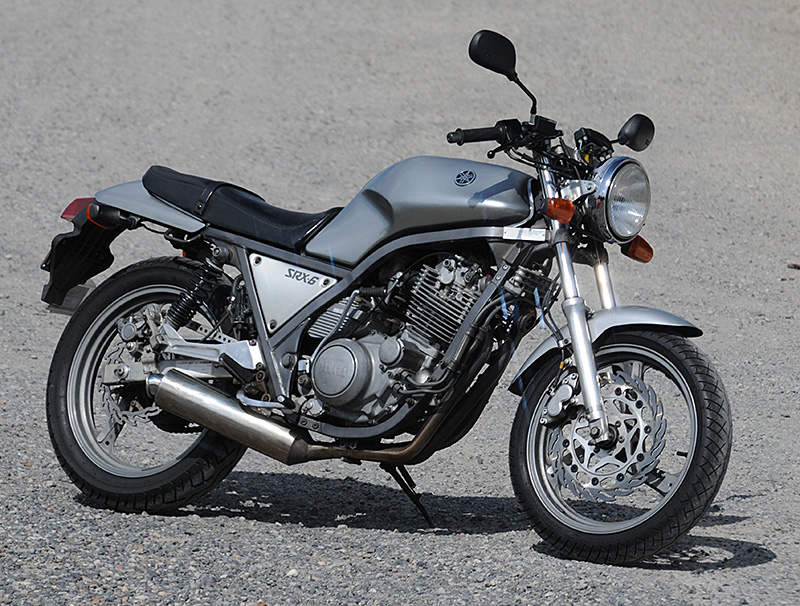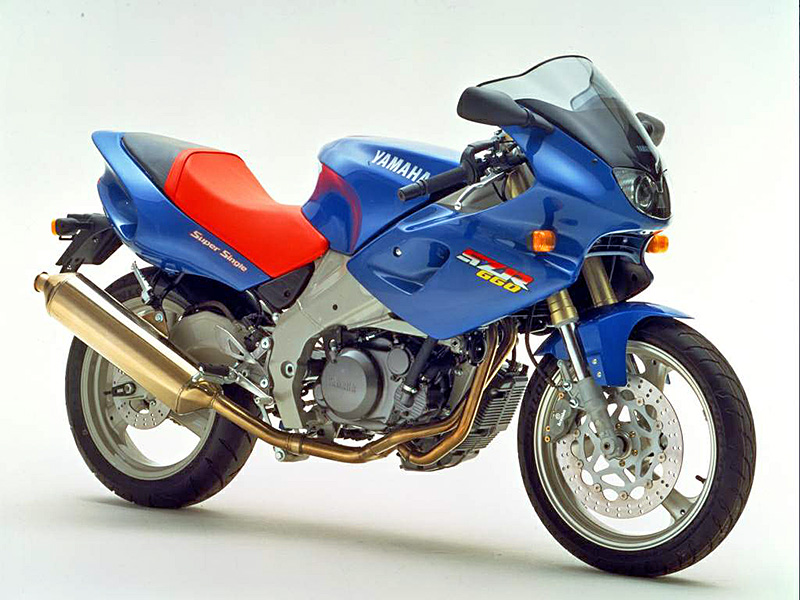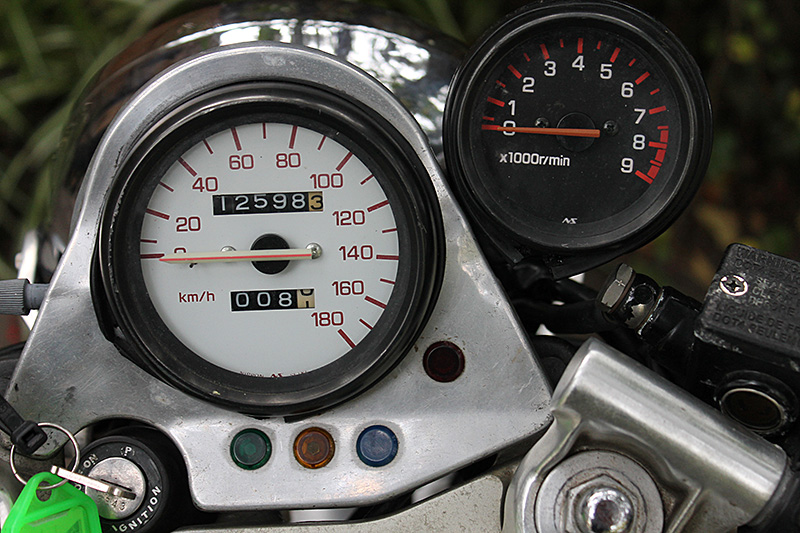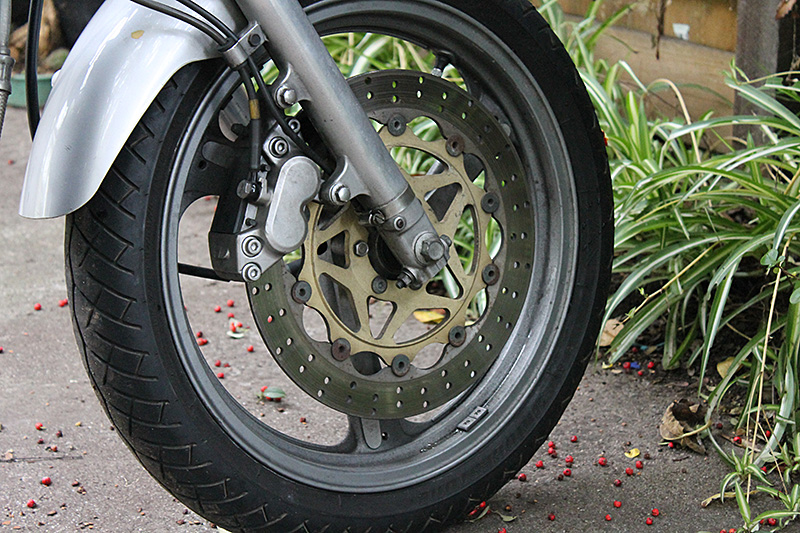Motorcycle Investor mag
Subscribe to our free email news

Our bikes – Yamaha SRX600

Singular Temptation
(Guy 'Guido' Allen, December 2020)

Ever considered going single? It definitely has its rewards…
Despite all the good intentions in the world, I had failed when it came to one of my project bikes: the 1978 Yamaha SR500. Over four years after I bought it, it was still sitting in a corner of the shed in more or less the condition it arrived: In pieces. Sure, I occasionally got a sudden rush of blood to the wallet and bought it some new bits, but it’s so far failed to assemble itself.
The embarrassing part of that little situation is I’ve been a member of the SR500 Club of Australia (on the web at sr500club.org) for several years and one of the few things I’ve failed to get running is the SR. Not to worry. There are two ways out of these situations: Fix it; Or buy your way out.

There it was, staring back at me from the ad – ‘salvation’ in the form of a running SRX-6 (also known as the SRX600 and accepted by the club), the single-cylinder successor to the SR, launched locally in 1986 – a touch earlier than Honda’s sweet XBR500 single.

As a little aside, Yamaha launched a third generation, the SZR660 of 1996 (above), which was a fantastic sports bike.
My SRX was living in north Queensland and so, yet again, I bought it over the phone. I’ve done this many times over the years and, so far, it’s worked out okay. A leisurely chat with the owner tends to sort out whether it’s worth a punt.
He said it was straight and running well – perhaps just as importantly, it was in current use. It was advertised as cosmetically a little rough, but I was assured it was straight. He’d changed the dash over for a digital Vapor item, and brake discs for aftermarket ‘wave’ designs. Plus the ultra-heavy stock exhaust had been swapped over for something that breathes a little more freely. All the original bits (the instruments were tired but repairable) came with it. Including the fuel filler cap, which had been swapped for an alloy screw-in item.
As usual, I took delivery of the monster with a little trepidation. Would it start? And, if it did, would it immediately reward me with expensive clanging noises? Nup. It was just fine.

Though I’ve ridden SR500s in recent years, I hadn’t thrown a leg over an SRX since their launch in the 1980s. I was working for magazine Australian Motor Cycle News at the time and ended up doing a comparo with that bike and the XBR. It was a tough call. The Yamaha had a nicer chassis and slimmer looks, while the Honda had a huge advantage in that it had electric start. The SRX was kick-only – so maybe it appealed more to the traditionalists.
Horsepower was nearly the same (42 claimed for the Yam, and 44 for the Honda), while they were within a kilo of each other in dry weight, or about 155kg.
This particular version is a relatively recent import from Japan, known as a 2JY in Yam-speak. So far as specs and performance go, it’s mechanically identical, though it runs a single front disc (rather than twins) plus 17-inch front and than 18-inch rear wheels. There was a later (1990) Japan-only variant which switched from twin shocks at the rear to a monoshock and included an electric starter.
The heart is an over-square air-cooled four-valve single
making peak power at a relatively lazy 6500rpm and torque
1000rpm earlier. Driving a five-speed gearbox, it runs a
fairly basic square-tube steel frame with conventional
forks and twin-shock rear.
Most western markets got twin disc braking on the front,
though the big single item on this version is more than
adequate.

In the end, I went back to standard instruments and brake discs.

What’s it like? Tiny. I’ve ridden bigger 125s and look like an elephant on a bicycle when on board.
Size issues aside, it’s a hoot. This one is running without a battery and typically takes a few stabs of the kick-lever to wake it up from cold. Sometimes more if it’s been sitting for a while. Warm, it’s usually a one-kick affair.
It’s not going to break any lap records, but once warmed up it gets away with a surprising authority. You have no fears when you sleeze up to the grid for the morning grand prix away from the traffic lights. Top speed is about 170km/h, so it will happily cruise at decent highway speeds.
The handling is delightful. This one has been sorted by the previous owner, who took the trouble to refresh the suspension at both ends once it got tired. It weighs sod-all, is low-slung, and your biggest problem is underestimating its cornering abilities.
Steering is light, while braking is very strong. Again, the sheer lack of weight and size make a big difference here.
I generally spend most of my riding life on much bigger and more complex machinery, which is partly why the SRX has so much appeal. It’s like a fresh drink of spring water on a hot day. You can’t believe how good something so simple can be until you try it for yourself.
Though I’m not about to break the habit of a lifetime and give up the big bikes, the SRX is now a much-valued member of the shed clan at Chateau Guido. It’s a reminder of how little you really need to have fun on a motorcycle.
(Ed’s note: I did eventually sell the SR500 and bought another, which we got running after a few little dramas. More on that here.)

***

Resources
Yamaha SR500 club Australia
SR500club.org
Well-run club with a very enthusiastic membership and some
international connections.
SRX site
SRX600.net
Privately-owned site with a heap of info.

SPEX
Yamaha SRX600
ENGINE
Type: Air-cooled four-stroke single with four valves per
cylinder
Bore and Stroke: 96 x 84mm
Displacement: 595cc
Compression ratio: 8.5:1
Fuel system: 27mm Tekei carburettor
TRANSMISSION
Type: 5-speed constant mesh
Final drive: Chain
CHASSIS & RUNNING GEAR
Frame type: Twin-loop square-section steel
Front suspension: Conventional 36mm fork, air preload
Rear suspension: Twin shock, preload adjustment
Front brakes: Dual or single disc, depending on market
Rear brake: Single disc
DIMENSIONS & CAPACITIES
Dry weight: 155kg
Seat height: 770mm
Fuel capacity: 15lt
PERFORMANCE
Max power: 42hp @ 6500rpm
Max torque: 51Nm @ 5500rpm
OTHER STUFF
Price when new: $5000 plus ORC
Good
Light & easy
Good performance
Not so good
Kick-start only in most versions
-------------------------------------------------
Produced by AllMoto abn 61 400 694 722
Privacy: we do not collect cookies or any other data.

Archives
Contact




